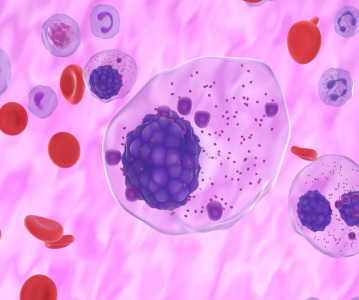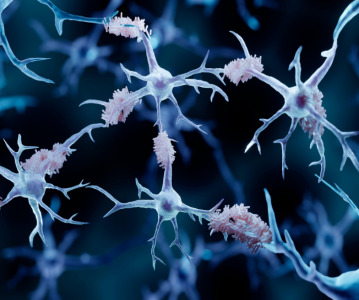Spinraza meets primary endpoint at interim analysis of Phase III study in later-onset SMA

Biogen is preparing for the potential launch of Spinraza in the US possibly as early as the end of 2016.
Biogen and Ionis Pharmaceuticals have announced that Spinraza (nusinersen), an investigational treatment for spinal muscular atrophy (SMA), met the primary endpoint at the interim analysis of CHERISH, the Phase III study evaluating Spinraza in later-onset (consistent with Type 2) SMA. The analysis found that children receiving Spinraza experienced a highly statistically significant improvement in motor function compared to those who did not receive treatment. Spinraza demonstrated a favorable safety profile in the study.
These results, along with our successful trial in infantile-onset SMA, reinforce the potential of SPINRAZA to benefit a broad range of SMA patients,” said Michael Ehlers, executive vice president, head of Research and Development at Biogen. “We will make regulators around the globe aware of this data and will continue working closely with them to bring Spinraza to families affected by SMA as quickly as possible.”
Biogen is preparing for the potential launch of Spinraza in the US possibly as early as the end of 2016 or the first quarter of 2017.
CHERISH is a 15-month study investigating Spinraza in 126 non-ambulatory patients with later-onset SMA (consistent with Type 2), including patients with the onset of signs and symptoms at greater than 6 months and an age of 2 to 12 years at screening.
Results from the primary endpoint of the pre-specified interim analysis demonstrated a difference of 5.9 points at 15 months between the treatment and sham-controlled study arms, as measured by the Hammersmith Functional Motor Scale Expanded (HFMSE). From baseline to 15 months of treatment, patients who received Spinraza achieved a mean improvement of 4.0 points in the HFMSE, whereas patients who were not on treatment declined by a mean of 1.9 points. The HFMSE is a reliable and validated tool specifically designed to assess motor function in children with SMA, and a change of three points or greater in the HFMSE has previously been identified as clinically meaningful. Data from the other endpoints analysed were consistently in favour of children who received treatment. Spinraza demonstrated a favourable safety profile. The majority of the adverse events were considered to be either related to SMA disease, common events in the general population, or events related to the lumbar puncture procedure. No patients discontinued the study. With the positive interim analysis, the CHERISH study will be stopped and participants will be able to transition into the SHINE open-label extension study to receive Spinraza. Full study results will be presented at future medical congresses. “These data further validate the potential of Spinraza as a treatment for patients with SMA,” said B. Lynne Parshall, chief operating officer of Ionis Pharmaceuticals. “We are grateful to all the families and clinicians who have participated in all of the Spinraza studies. Without their commitment and support, this program would not have been able to progress so quickly.” FDA recently accepted the company’s New Drug Application (NDA) for Spinraza as a treatment for SMA and communicated they plan to act early on the NDA under an expedited review. In addition, the EMA recently validated Biogen’s Marketing Authorization Application (MAA) in the EU. The EMA’s Committee for Medicinal Products for Human Use (CHMP) granted Accelerated Assessment status and the FDA granted Priority Review to Spinraza. Biogen is initiating regulatory filings in other countries in the coming months. Biogen initiated a global expanded access program (EAP) in infantile-onset SMA earlier this year. The company will continue to explore where and when the EAP may be broadened to include patients with later-onset SMA (consistent with Type 2).Related News
-
News BioNTech to begin mRNA vaccine manufacturing in Rwanda by 2025
German biotechnology company BioNTech has stated their intentions to begin production at their mRNA vaccine factory in Rwanda by 2025, which will mark the first foreign mRNA vaccine manufacturing site on the continent of Africa. -
News Identifying Alzheimer’s Disease biomarker proteins with whole blood tests
A University of Manchester spin-out pharmaceutical company, PharmaKure, has reported successful study results for the quantification of Alzheimer’s Disease biomarker proteins with a whole blood test. -
News Bill & Melinda Gates Foundation to boost mRNA vaccine initiatives in Africa with USD $40m
To address vaccine inequality and accessibility issues, the Bill & Melinda Gates Foundation aims to deliver USD $40m to various biotech companies and vaccine manufacturers in support of mRNA vaccine development. -
News CPHI Podcast Series: Exploring neurological frontiers in Alzheimer's and beyond
The next episode of the CPHI Podcast Series delves into the science and background behind some recent developments in the field of Alzheimer's disease and neurological disorders. -
News Is patient centricity the future of pharmaceutical manufacturing?
In this interview with Sandra Sánchez y Oldenhage, President of PharmAdvice, she speaks to the importance of considering patients in the manufacturing stages of the pharmaceutical supply chain, and how it can redefine healthcare. -
News CPHI Podcast Series: How to leverage AI for Drug Discovery
Artificial intelligence is the topic of debate in the latest episode from the CPHI Podcast Series, where Digital Editor Lucy Chard speaks with Bill Whitford of DPS Group about the integration of AI in healthcare. -
News Pfizer forges ahead with blood cancer therapy after approval from FDA
Pfizer gains accelerated approval from the US FDA for their new bispecific antibody therapy for multiple myeloma, set to address an unmet need for patients. -
News Alzheimer's drug donanemab deemed effective in landmark clinical trial
Results from the TRAILBLAZER-ALZ 2 Randomised Clinical Trial into the use of donanemab to treat early symptoms of Alzheimer’s disease have been analysed.
Position your company at the heart of the global Pharma industry with a CPHI Online membership
-
Your products and solutions visible to thousands of visitors within the largest Pharma marketplace
-
Generate high-quality, engaged leads for your business, all year round
-
Promote your business as the industry’s thought-leader by hosting your reports, brochures and videos within your profile
-
Your company’s profile boosted at all participating CPHI events
-
An easy-to-use platform with a detailed dashboard showing your leads and performance







